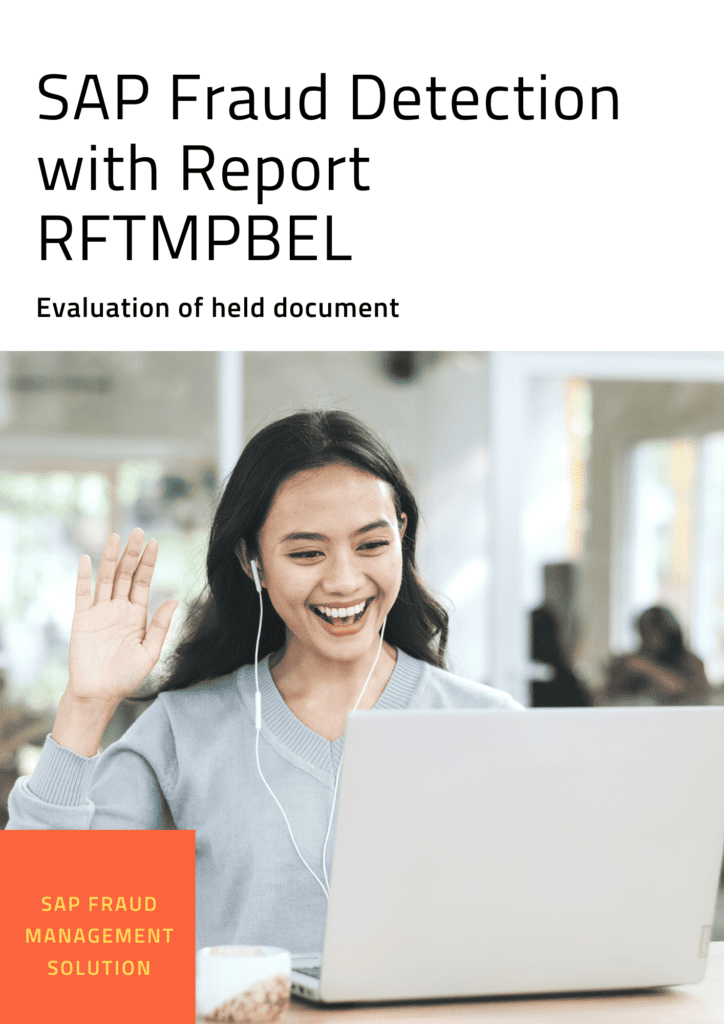Introduction:
In today’s digital landscape, fraud detection has become a critical concern for businesses using the SAP system. One effective way to mitigate fraud risks is by evaluating held documents using the SAP report RFTMPBEL. This article will guide you through the process of leveraging RFTMPBEL to enhance your SAP system’s security and prevent financial losses.
Understanding Held Documents:
Held documents refer to transactional records within the SAP system that have been flagged for further evaluation before they can be posted. These documents are held due to potential discrepancies or anomalies that require investigation. Evaluating held documents helps identify and prevent fraudulent activities, ensuring the integrity of financial processes.
Utilizing the RFTMPBEL Report:
The RFTMPBEL report is a powerful tool provided by SAP for analyzing and reviewing held documents. It enables users to generate comprehensive reports containing key information about the held documents, such as document numbers, document types, amounts, and reasons for being held. By utilizing this report, you can gain insights into potential fraud attempts and take appropriate actions to safeguard your organization’s assets.

Step-by-Step Guide: Evaluating Held Documents with RFTMPBEL:
- Accessing the RFTMPBEL Transaction:
- Log in to your SAP system with the appropriate credentials.
- Enter transaction code “RFTMPBEL” in the command field and press Enter.
- The RFTMPBEL report screen will appear.
- Selecting Evaluation Criteria:
- Choose the relevant evaluation criteria, such as document type, posting date, or specific company codes.
- Specify the desired parameters to narrow down the report results.
- Running the Report:
- Click on the “Execute” button to run the report based on the selected criteria.
- The RFTMPBEL report will generate a list of held documents that match your specified parameters.
- Analyzing Held Documents:
- Review the list of held documents, paying close attention to critical details like document numbers, amounts, and reasons for being held.
- Identify any suspicious patterns or inconsistencies that may indicate fraudulent activities.
- Taking Action:
- Once you have identified potentially fraudulent held documents, take appropriate action based on your organization’s policies and procedures.
- This may include conducting further investigations, reaching out to relevant stakeholders, or blocking transactions associated with the held documents.
FAQs:
Q1: Can the RFTMPBEL report automatically detect fraud? A1: The RFTMPBEL report itself does not automatically detect fraud. It provides valuable information about held documents, enabling you to identify potential fraud attempts and take necessary actions.
Q2: What are the common reasons for documents being held? A2: Held documents can be flagged due to various reasons, such as incomplete information, mismatched balances, or suspicious transaction patterns.
Q3: How often should I evaluate held documents using the RFTMPBEL report? A3: It is recommended to evaluate held documents periodically, depending on your organization’s risk assessment and compliance requirements. Regular reviews help ensure timely detection and prevention of fraudulent activities.
Conclusion:
Effectively evaluating held documents is crucial for fraud detection and prevention within the SAP system. By leveraging the RFTMPBEL report, you can gain valuable insights into potential fraud attempts and take appropriate actions to safeguard your organization’s financial processes. Regularly monitoring and analyzing held documents will help enhance the overall security of your SAP system and protect against financial losses.
Remember, fraud prevention is an ongoing effort that requires continuous vigilance and adherence to best practices. By staying proactive and utilizing the tools available, such as the RFTMPBEL report, you can mitigate risks and maintain the integrity of your organization’s financial operations.
